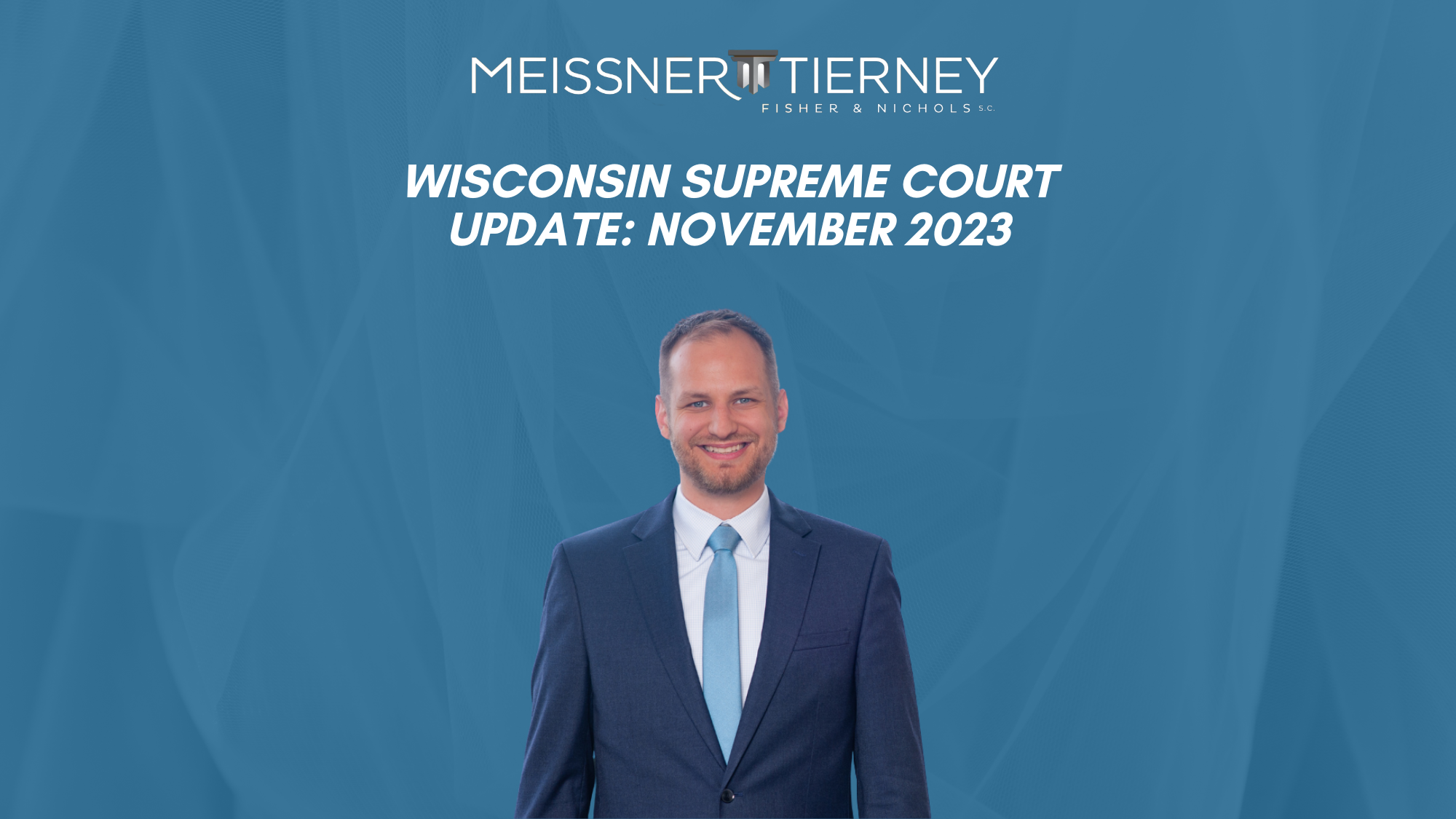Redistricting takes center stage at the Wisconsin Supreme Court this November as the court’s sole case set for oral argument is an original action addressing the constitutionality of the current state legislative maps. Let’s dive right in.
Cases Decided
No merits decisions were issued in the last month. However, the court did issue a series of published orders pertaining to the redistricting litigation discussed below. On October 6, the court released a Memorandum Decision and Order of Justice Janet C. Protasiewicz in Clarke v. Wisconsin Elections Commission, 2023 WI 66, in which Justice Protasiewicz denied the Legislature’s motion seeking her recusal from the case. Also on October 6, the court issued two published orders. In one, the court granted the original action petition in Clarke v. Wisconsin Elections Commission, 2023 WI 70, agreeing to review several redistricting issues. In the other, the court denied the original action petition in Wright v. Wisconsin Elections Commission, 2023 WI 71, another redistricting case which raised many of the same issues as the Clarke case for which the court granted review.
Up for Review
Clarke v. Wisconsin Elections Commission, No. 2023AP1399-OA
Redistricting
Oral Argument: November 21
Partisan gerrymandering has long been a flash point in judicial elections in Wisconsin. Case-in-point, it was one of the key issues of Justice Protasiewicz’s campaign for her spot on the high court earlier this year. Yet, court watchers may be surprised to learn that the redistricting case now before the court does not involve a partisan gerrymandering issue—at least not right now. The Clarke petitioners asked the court to take up the question of whether the Wisconsin Constitution contains some prohibition on partisan gerrymandering. However, citing the fact-intensive nature of that question, the court instead granted review on two other issues: (1) Whether the current maps violate the contiguity requirements contained in Article IV, Sections 4 and 5 of the Wisconsin Constitution, and (2) Whether the current maps were adopted in violation of the Wisconsin Constitution’s separation of powers principles. We’ll focus on the contiguity issue since it is the issue most likely to drive the court’s analysis.
The Wisconsin Constitution contains two requirements regarding district boundaries that are somewhat at odds. It says (1) that legislative districts shall be “bounded by county, precinct, town or ward lines,” and (2) that districts shall “consist of contiguous territory.” At the time the state constitution was written, all municipalities in the state were contiguous, making it easy to comply with both directives. However, in the many decades that followed, cities and villages have employed their annexation powers to dice up towns across the state in ways that created several municipal “islands.” These islands are portions of municipalities that are geographically disconnected from the rest of the municipality to which they belong.
This phenomenon raises the question of how to draw maps so that its districts are both bounded by municipal lines and contiguous. For many years, the legislature and the courts have resolved this tension by permitting districts that are “politically contiguous” but not “geographically contiguous.” Under that approach, municipal islands may be incorporated into a district if they are part of a municipality included in that district, even if they are not geographically connected to the rest of the district. This approach was applied as recently as the supreme court’s decision in Johnson v. Wisconsin Elections Commission, 2021 WI 87, ¶36, 399 Wis. 2d 623, 967 N.W.2d 469.
The petitioners in this case argue that political contiguity is insufficient to satisfy the constitution’s contiguity requirement. Instead, the petitioners argue that strict geographical contiguity is required. They contend all of the physical land area in a district must be connected, and that the current maps are unconstitutional because they contain municipal islands which are not geographically contiguous with their districts. The petitioners argue the court must strike down the current maps on this basis.
Besides the merits issues, the court directed the parties to provide briefing on what it should do if it concludes the current maps are unconstitutional. Specifically, the court asks what standards should guide its adoption of remedial maps and what fact-finding may be required to assist the court in adopting remedial maps. In responding to these questions, the parties focus on two key issues. First, the petitioners ask the court to reject the “least change” approach embraced by the court two years ago in Johnson. In that case, the court said that in adopting remedial maps, it would start with the maps currently on the books (which were enacted in 2011) and make as few adjustments as possible to bring the maps into constitutional compliance. The petitioners in the current case ask the court to forgo that approach and draw new remedial maps from scratch. The second key issue is whether the court should consider political fairness when adopting remedial maps. This is where the partisan gerrymandering issue, which the court declined to accept for review, could reappear.
Oral argument for this case is set for November 21, but that won’t be the end of the case. The Wisconsin Legislature has filed a motion to dismiss, which the court has not yet addressed. In addition, if the court concludes the current maps are unconstitutional, expect further briefing, oral argument, and maybe even fact-finding to assist the court in adopting new remedial maps. Keep in mind that any new maps would have to comply with both the Fourteenth Amendment’s Equal Protection Clause and the federal Voting Rights Act. And then, if new maps are adopted, expect an appeal to the United States Supreme Court before all is said and done.
New to the Docket
No new civil cases to report.





